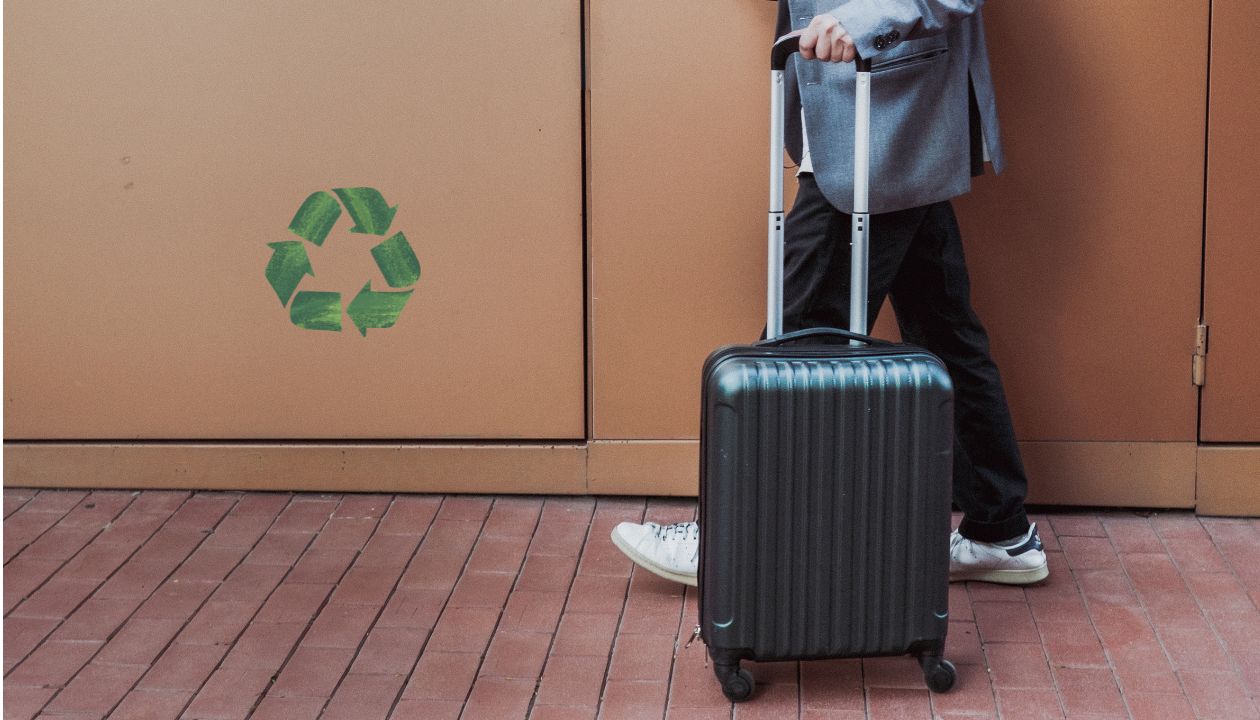
The Rise of Circular Travel Gear: Why Reusable Luggage is the Future
Introduction: A New Era of Conscious Travel
There was a time when travel gear was all about aesthetics, size, and features like wheels that rotated 360 degrees. Then came the age of lightweight materials. But today, the conversation is shifting again—this time, towards circularity.

As more travelers wake up to the impact of their journeys on the planet, the industry is being forced to rethink its priorities. Enter circular travel gear—luggage and accessories designed not just for performance but for reuse, repair, recyclability, and reduced waste.
It’s not just a trend. It’s a transformation. And it’s here to stay.
What is Circular Travel Gear, Exactly?
Circular travel gear is designed with a closed-loop lifecycle in mind. That means:
-
It’s made from recycled or renewable materials
-
It can be reused, repaired, or upgraded, rather than discarded
-
It avoids virgin resources and minimizes landfill waste
-
When it reaches end-of-life, it can be recycled or biodegraded responsibly.
Unlike linear gear (take → make → waste), circular gear thrives on reuse and regeneration.
Why Linear Luggage Is Failing Us
Let’s be honest: most suitcases today are designed to break down within a few years.
-
Zippers jam.
-
Wheels wobble.
-
Outer shells crack.
-
And entire bags are thrown out because parts aren’t modular or replaceable.
Add to this the fact that most bags are made of mixed plastics and metals, making them nearly impossible to recycle. So where do they go?
Landfills. Or worse, incinerators.
Globally, over 92 million tons of textile and fashion-related waste are generated every year. Travel gear is a growing contributor.
How Circular Luggage Solves the Problem
Circular luggage reimagines the entire lifecycle of a bag. Let’s break it down.
1. Sourcing Better Materials
-
rPET made from used water bottles
-
Recycled aluminium frames
-
Upcycled car headlights and tire rubber
-
Vegan leather alternatives made from cactus, mushroom, or apple peels
2. Designing for Durability
-
Replaceable wheels, zippers, and handles
-
Scuff-resistant and repairable shells
-
Lifetime warranties that promote fixing, not dumping
3. End-of-Life Responsibility
-
Take-back programs for worn-out bags
-
Bags designed for full disassembly
-
Materials that can be composted, remade, or melted down
Why Travelers Are Embracing Circular Gear
The modern traveller isn’t just booking flights and accommodations—they’re booking their values.
A 2023 Booking.com survey revealed that:
-
76% of global travellers want to travel more sustainably.
-
43% actively seek out brands with visible sustainability efforts
-
62% feel guilty when they travel in ways that hurt the planet.
This rising awareness is shaping demand for luggage that isn’t just durable—but meaningfully responsible.
Circular gear speaks directly to:
-
Eco-conscious millennials and Gen Z
-
Luxury travelers who care about provenance
-
Minimalist digital nomads who value long-term gear
-
Frequent flyers who burn through travel products quickly
Case Studies: Circular Travel Gear in Action
🧳 Koora
Crafts luggage using recycled plastic bottles and car headlights. Focused on modular repairability and clean minimalist design. Donates trees for every purchase over a certain threshold—creating a net-positive impact.
🧳 Paravel
Uses upcycled plastic and carbon-neutral production. Its Aviator suitcase is one of the world’s first carbon-neutral carry-ons.
🧳 Solgaard
Offers bags made from ocean-bound plastic. Built-in charging stations and modular inserts for extended use.
These aren’t just marketing gimmicks. Each of these brands is setting new industry standards.
The Business Case for Circular Luggage
Circularity isn’t just a moral imperative—it’s a smart business model.
💰 Increased Customer Loyalty
Brands offering repairable gear often see higher repeat purchase rates and longer customer retention.
📈 Premium Perception
Circular products are seen as luxury with a conscience—commanding higher price points and better margins.
📦 Lower Long-Term Costs
A modular bag with replaceable parts costs less over time than buying a new one every 3 years.
🌱 Regulatory Advantage
With more countries banning or taxing non-recyclable plastics, brands built on circularity are future-proof.
How to Tell If Your Luggage is Truly Circular
Look for:
-
Third-party certifications: Global Recycled Standard, Climate Neutral, Cradle to Cradle
-
Repair or trade-in policies
-
Clear disclosures on materials and sourcing
-
Take-back or recycling programs
Avoid:
-
"Greenwashed" products with vague claims like eco-friendly or green materials
-
Brands with no transparency or repair options
-
Non-recyclable polycarbonate or ABS shells with no take-back policy
Why Reusability is the Future of Travel
Reusability is the backbone of circular design. In a world where fast fashion, fast tech, and fast travel are breaking systems and burning resources, reusability offers relief.
- It slows down the cycle.
- It forces better design.
- It inspires mindful consumption.
- It respects the journey—not just the destination.
Reusable luggage is a visible, mobile statement:
I care about where I’m going—and how I get there matters too.
Conclusion: Travel Gear That Travels Beyond You
Circular travel gear is more than a product shift. It’s a cultural reset.
- It says: I don’t need more. I need better.
- It says: I’m not just a traveler—I’m a steward.
- It asks: How can my journey leave a lighter footprint and a longer legacy?
The future of travel is not just digital, efficient, or convenient.
The future of travel is circular.
Ready to travel light on the planet and heavy on purpose?
Explore Koora’s circular luggage—crafted from upcycled materials, built to last, and made for travelers who care.
Because the only thing disposable about your journey… should be your boarding pass.



Leave a comment
This site is protected by hCaptcha and the hCaptcha Privacy Policy and Terms of Service apply.